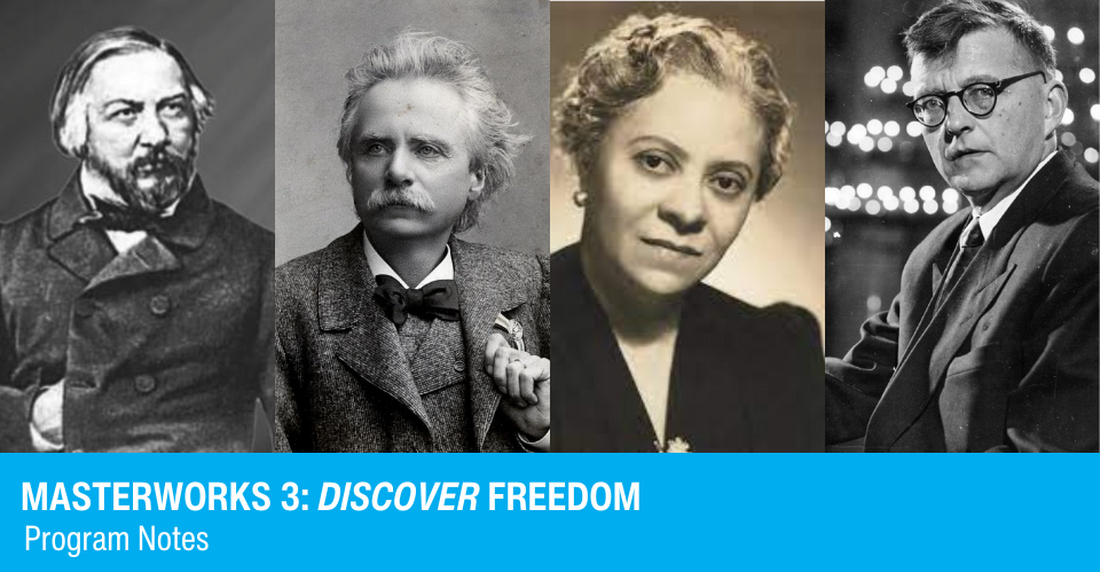30 SECOND NOTES: Mikhail Glinka, acknowledged as “The Father of Russian Concert Music,” based his opera Ruslan & Lyudmila on a fantasy by Alexander Pushkin. Its bracing overture opens this Des Moines Symphony program. Soloist Joyce Yang follows with Edvard Grieg’s Piano Concerto in A Minor, one of the most beloved pieces in the keyboard repertory. Florence Price was a musical pioneer — among the first Black students to graduate from the New England Conservatory of Music and the first African-American woman to have a work performed by a major American orchestra (Symphony in E Minor, Chicago Symphony Orchestra, 1933). Her lyrical and poignant Andante moderato is featured on this program. The Ninth Symphony of Dmitri Shostakovich is both immediately accessible and expressively ambiguous, a masterful creation that excites enjoyment as well as speculation.
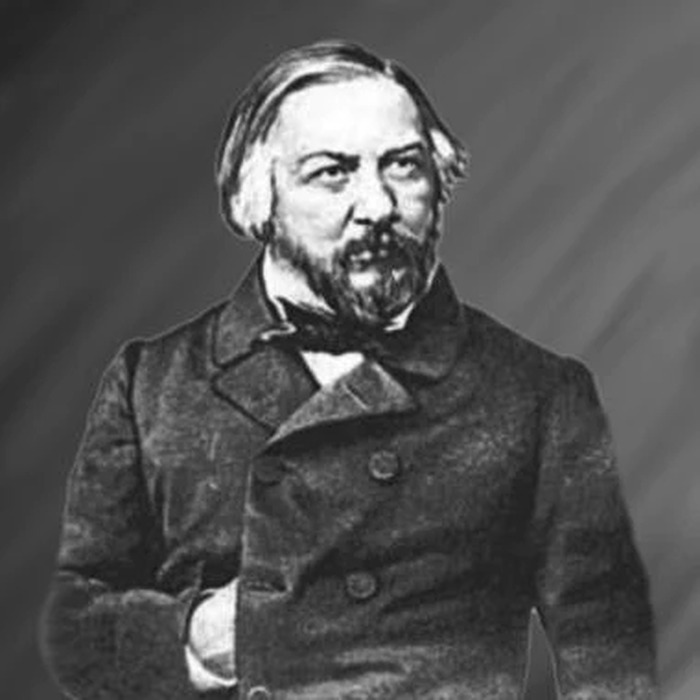
Mikhail Glinka
- Born June 1, 1804 in Smolensk, Russia
- Died February 15, 1857 in Berlin
OVERTURE TO RUSLAN & LYUDMILA
- First performed on December 9, 1842 in St. Petersburg, conducted by Karl Albrecht.
- First performed by the Des Moines Symphony on March 27, 1939 with Frank Noyes conducting. Three subsequent performances occurred, most recently on September 14 & 15, 2013 with Joseph Giunta conducting.
(Duration: ca. 5 minutes)
Mikhail Glinka is credited with being “The Father of Russian Concert Music.” When his first opera, A Life for the Czar (also known as Ivan Susanin), appeared in 1836, it was hailed as a breakthrough in the use of native folk music as the basis of a serious musical work. The opera, whose plot was based on an incident from Russian history in which the people played a vital role, was an immediate success and had a profound influence on later nationalistic composers. Important not only in his own country, Glinka was the first Russian composer whose works received widespread attention beyond his native land. The libretto of Ruslan & Lyudmila, his second opera, was based on Pushkin’s fairy tale. Just prior to her betrothal to Ruslan, Lyudmila has been spirited away from her father, the Grand Duke of Kiev, by the evil dwarf Tchernomor. Ruslan perseveres through many fantastic adventures to regain his beloved and they are united in marriage in the final scene. The exuberant Overture is based on themes from the opera. The opening section uses melodies from the marriage scene; the lyrical second theme is from Ruslan’s aria in which he sings of his love for Lyudmila. The development employs all three themes. The recapitulation begins with the rushing scales of the opening.
The score calls for flutes, clarinets, oboes, and bassoons in pairs, four horns, two trumpets, three trombones, timpani, and the usual strings consisting of first violins, second violins, violas, violoncellos and double basses.
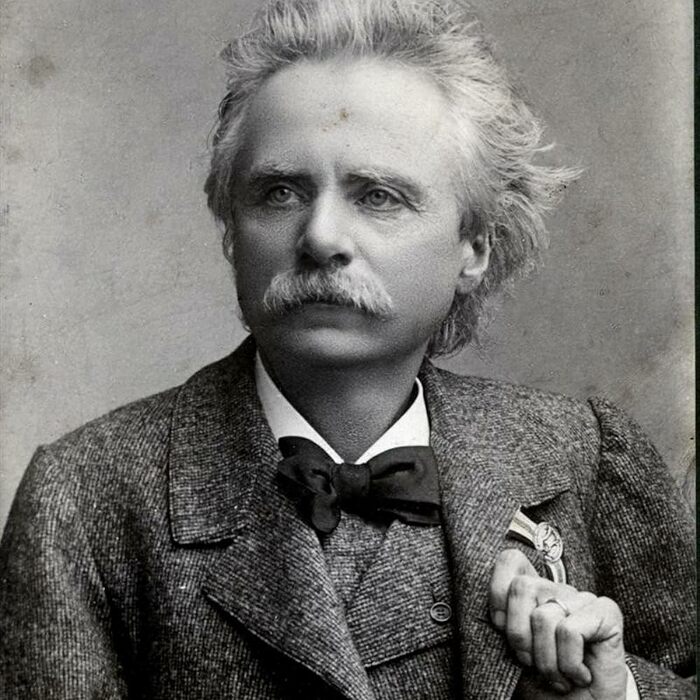
Edvard Grieg
- Born June 15, 1843 in Bergen, Norway
- Died there on September 4, 1907
PIANO CONCERTO IN A MINOR, OP. 16
- First performed on April 3, 1869 in Copenhagen, conducted by Holger Simon Paulli with Edmund Neuport as soloist.
- First performed by the Des Moines Symphony on March 17, 1946 with Frank Noyes conducting. Three subsequent performances occurred, most recently on November 9 & 10, 2019 conducted by Joseph Giunta with Jon Kimura Parker as soloist.
(Duration: ca. 30 minutes)
Grieg completed his studies at the Leipzig Conservatory in 1863, but rather than heading directly home to Norway, he settled in Copenhagen to study privately with Niels Gade, at that time Denmark’s most prominent musician and generally regarded as the founder of the Scandinavian school of composition. Back in Norway, Grieg’s creative work was concentrated on the large forms advocated by his Leipzig teachers and by Gade. By 1867, he had produced the Piano Sonata, the first two Violin and Piano Sonatas, a Symphony (long unpublished and made available only as recently as 1981) and the concert overture In Autumn. He also carried on his work to promote native music, and gave an unprecedented concert exclusively of Norwegian compositions in 1866. Grieg arranged to have the summer of 1868 free of duties, and he returned to Denmark for an extended vacation at a secluded retreat at Sölleröd, where he began his Piano Concerto. He thoroughly enjoyed that summer, sleeping late, taking long walks, eating well, and tipping a glass in the evenings with friends at the local inn. The sylvan setting spurred his creative energies, and the new Concerto was largely completed by the time he returned to Norway in the fall.
The Piano Concerto’s first movement opens with a bold summons by the soloist. The main theme is initiated by the woodwinds; the second theme is a tender cello melody. An episodic development section is largely based on the main theme. The recapitulation returns the earlier themes before the stern introductory measures are recalled to close the movement. The Adagio begins with a song filled with sentiment and nostalgia played by the strings. The soloist weaves elaborate musical filigree above a simple accompaniment before the lovely song returns. The themes of the finale’s outer sections use the rhythms of a popular Norwegian dance, the halling, while the movement’s central portion presents a melodic inspiration in the flute that derives from the dreamy atmosphere of the preceding movement.
The score calls for flutes, clarinets, oboes, and bassoons in pairs, four horns, two trumpets, three trombones, timpani, and the usual strings.
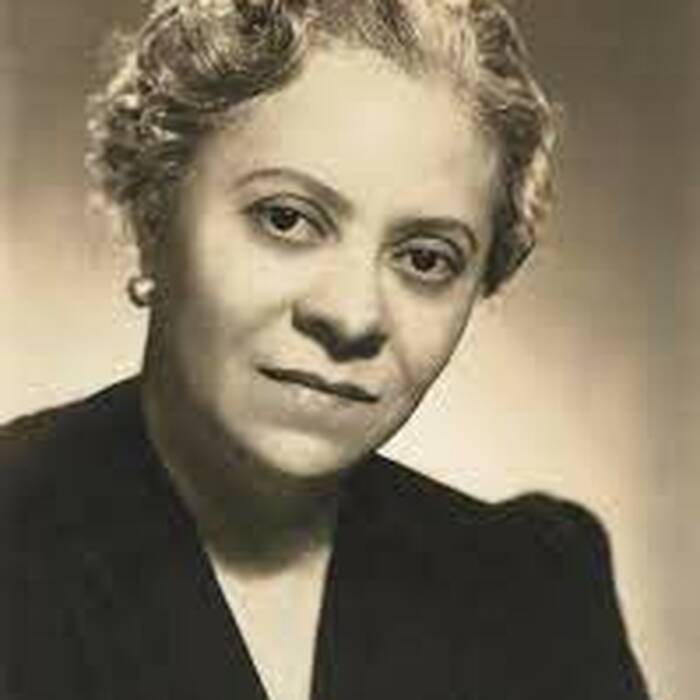
Florence Price
- Born April 9, 1888 in Little Rock, Arkansas
- Died June 3, 1953 in Chicago
ANDANTE MODERATO FOR STRING ORCHESTRA
- First performed as a string quartet on March 15, 2018 at the Crystal Bridges Museum of American Art in Bentonville, Arkansas by violinists Er-Gene Kahng and Andrew Chu, violist Evan Buckner and cellist Dominic Na.
- These concerts mark the first performances of this piece by the Des Moines Symphony.
(Duration: ca. 9 minutes)
Florence Price was a musical pioneer — one of the first African-American students to graduate from the New England Conservatory of Music, the first African-American woman to have a symphonic work performed by a major American orchestra, the first winner of the composition contest sponsored by the progressive Wanamaker Foundation.
Florence Beatrice Smith was born in 1888 into the prosperous and cultured family of a dentist in Little Rock, Arkansas, and received her first piano lessons from her mother, a schoolteacher and singer; Florence first played in public when she was four. She later also took up organ and violin, and at age fourteen was admitted to the New England Conservatory of Music in Boston, where she studied with George Chadwick and Frederick Converse, two of their generation’s leading composers, wrote her first string trio and a symphony (now lost), and graduated in 1907 with honors for both an artist diploma in organ and a teaching certificate. She returned to Arkansas, where she taught at Arkadelphia Academy and Shorter College before being appointed music department chairman at Clark University in Atlanta in 1910. She returned to Little Rock two years later to marry attorney Thomas J. Price, and left classroom teaching to devote herself to raising two daughters, giving private instruction in violin, organ and piano, and composing.
In 1927, following racial unrest in Arkansas that culminated in a lynching, the Price family moved to Chicago, where Florence studied composition, orchestration, organ, languages and liberal arts at various schools with several of the city’s leading musicians and teachers. Black culture and music flourished in Chicago — jazz, blues, spirituals, popular, theater, and classical — educational opportunities were readily available, recording studios were established, the National Association of Negro Musicians was founded there in 1919, and Price took advantage of everything. She ran a successful piano studio, wrote educational pieces for her students, published gospel and folksong arrangements, composed popular songs (under the pseudonym VeeJay), and performed as a church and theater organist. Among her many friends were the physician Dr. Monroe Alpheus Majors and his wife, organist and music teacher Estelle C. Bonds, and Price became both friend and teacher to their gifted daughter, Margaret. In 1932, Price and Bonds (then just nineteen) won respectively first and second prize in the Rodman Wanamaker Foundation Composition Competition, established to recognize classical compositions by Black composers, Price for her Symphony in E Minor and Piano Sonata and Bonds for her song Sea Ghost. The performance of Price’s Symphony on June 15, 1933 by the Chicago Symphony Orchestra, conducted by Frederick Stock, was the first by a major American orchestra of a symphonic work by an African-American woman. Price continued to compose prolifically — three more symphonies and two more piano concertos, a violin concerto, chamber, piano and organ pieces, songs, spiritual arrangements, jingles for radio commercials — and received numerous performances, including her arrangement of the spiritual My Soul’s Been Anchored in the Lord that Marian Anderson used to close her historic concert at the Lincoln Memorial in Washington, D.C. on April 9, 1939. Florence Price died in Chicago on June 3, 1953.
The Andante moderato for String Orchestra is Price’s arrangement of the second and final movement of her String Quartet in G Major of 1929. The provenance of the Quartet is unknown, as are any early performances. The manuscript ended up among the many scores, letters, diaries and photographs discovered in 2009 during renovations of an abandoned house in St. Anne, Illinois, seventy miles south of Chicago, which had been Price’s weekend home and work studio. That nearly lost discovery is now preserved in the Florence Beatrice Smith Price Collection at the University of Arkansas. The score was published in 2017 in an edition by Er-Gene Kahng, UofA faculty member and violinist in the Quartet’s premiere, given on March 15, 2018 at the Crystal Bridges Museum of American Art in Bentonville, Arkansas. The Andante moderato wraps tender, lyrical opening and closing music around a quicker, scherzo-like central episode.
The score calls for the usual strings consisting of first violins, second violins, violas, violoncellos and double basses.
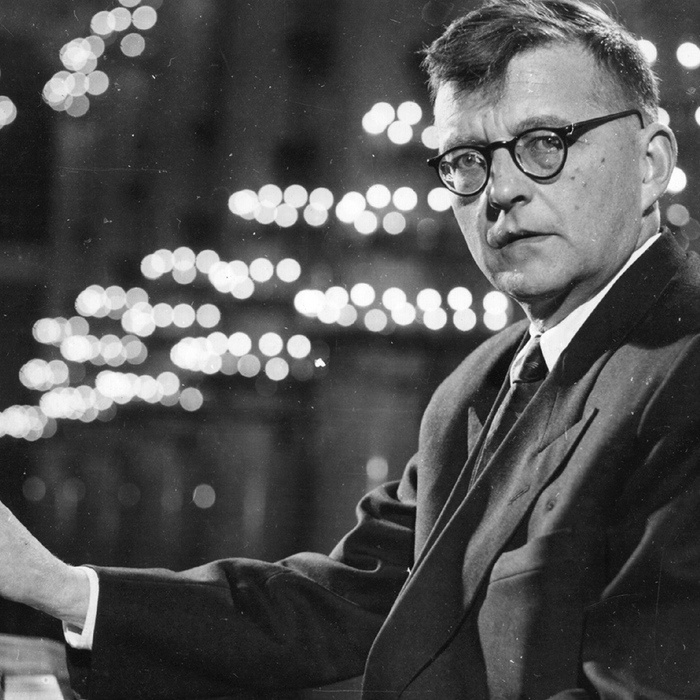
Dmitri Shostakovich
- Born September 25, 1906 in St. Petersburg
- Died August 9, 1975 in Moscow
SYMPHONY NO. 9 in E-Flat Major, OP. 70
- First performed on November 3, 1945 in Leningrad, conducted by Yevgeny Mravinsky.
- First performed by the Des Moines Symphony on October 18 & 19, 1980 with Yuri Krasnapolsky conducting. Two subsequent performances occurred, most recently on October 24 & 25, 2009 with Bright Sheng conducting.
(Duration: ca. 24 minutes)
A transcendent paean to peace; a celebration of victory; an affirmation of goodness and right — such was the role the Ninth Symphony of Shostakovich was supposed to fill. He began the piece in 1945 at the country retreat house for Soviet composers near Ivanova during the interval between the end of hostilities in Europe and the Allied victory in Asia, and it was everywhere conceded that the piece would be the third of the trio of “War Symphonies” that began in 1941 with the Symphony No. 7, which depicted the barbarous Nazi siege of Leningrad, and continued with the evocation of the bitter suffering and destruction of the massive conflict in the Eighth Symphony of 1943. “They wanted a fanfare from me, an ode; they wanted me to write a majestic Ninth Symphony,” recalled Shostakovich in his purported memoirs, Testimony. By “they” Shostakovich meant Stalin, and what “they” got was a surprise — a compact orchestral essay brimming with sardonic wit that many took as an insult to the Soviet hierarchy just when it was trying to rebuild spirits and cities (and solidify its own political power) in the months immediately after the war. “Stalin was incensed,” said the composer of the dictator.
In Testimony, Shostakovich revealed his difficulty in writing a heroic, apotheosizing symphony in 1945: “I doubt that Stalin ever questioned his own genius or greatness. But when the war against Hitler was won, Stalin went off the deep end. He was like the frog puffing himself up to the size of the ox, with the difference that everyone around him already considered Stalin to be an ox, and gave him an ox’s due. Everyone praised Stalin, and now I was supposed to join in this unholy affair. There was an appropriate excuse. We had ended the war victoriously; no matter what the cost, the important thing was that we had won, the empire had expanded. And they demanded that Shostakovich use quadruple winds, choir and soloists to hail the leader. All the more because Stalin found the number auspicious: the Ninth Symphony … [but] I couldn’t write an apotheosis to Stalin, I simply couldn’t.” Shostakovich saw the Ninth Symphony as one of the main causes of the condemnation of his music in 1948, after which he did not release a single important work until after Stalin’s death in 1953.
The Ninth Symphony is in five movements, the last three played without pause. The opening Allegro is a pedantically correct sonata form, a cheeky godchild of Prokofiev’s “Classical” Symphony. The violins give out the tripping main theme. A blast from the solo trombone ushers in the second theme, a sardonic little tune piped by the piccolo. The exposition is marked to be repeated. After both themes are treated to a bit of manipulation in the development section, and the main theme returns in its original form, comes one of the funniest moments in the symphonic repertory. The trombone, overly anxious to play its solo again, keeps butting into the main theme with its two-note call. The muted trumpets give a strident cry of derision before, finally, the aggressive trombone coaxes the solo violin to play the second theme again before the movement comes to a swaggering close.
The second movement is a somber valse triste largely entrusted to the woodwinds supported by icy, solemn parallel harmonies in the strings. Following is a crackling scherzo that leads without pause to the sepulchral Largo, in which powerful, solemn statements by the trombones and tuba are answered by plaintive recitatives in the bassoon’s highest register. Hardly the stuff of high comedy, this brief movement casts a strong shadow across the entire work, as though some seething inner emotion that here breaks out could turn all the surrounding music to bitter irony. How then to hear the whirling finale? As a denial of the dark omens of the fourth movement? As the unbridled merriment of a happy soul? As some sort of gallows humor? As an abstract, meaningless pattern of tones? There is no answer, only the response of the individual listener.
The score calls for piccolo, flutes, clarinets, oboes, and bassoons in pairs, four horns, two trumpets, three trombones, tuba, timpani, snare drum, bass drum, cymbals, tambourine, triangle and the usual strings.
